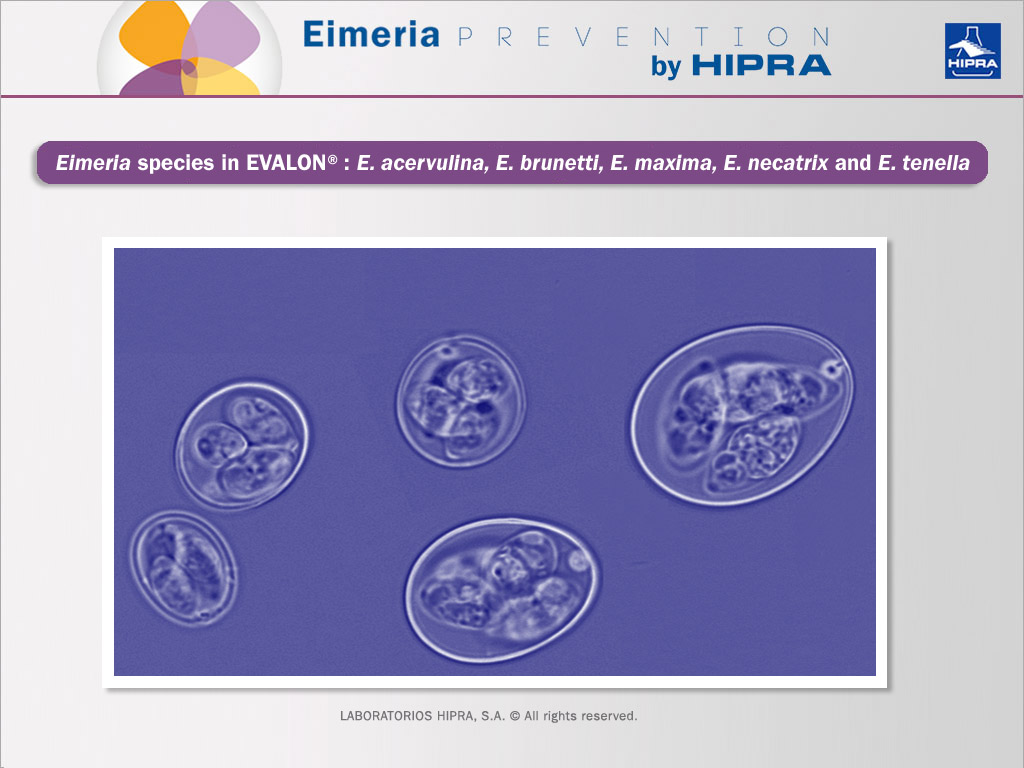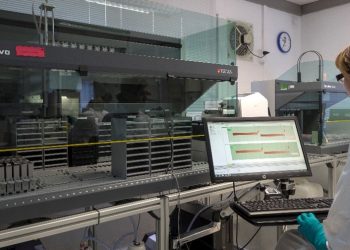Coccidiosis – due to parasites of the genus Eimeria – is one of the most devastating diseases in poultry: a disease which has always being present in every poultry flock since the first chick appeared on the earth; in fact, Eimeria is an ever-present parasite that it is impossible to eradicate. For this reason, a coccidiosis prevention strategy needs to be put in place for each batch of chickens that arrives on a farm. Worldwide losses due to coccidiosis in poultry are estimated to be around US$1.5 billion/year.
From the 1950s the use of some chemical molecules has been implemented to prevent the effects of the several Eimeria species that cause the disease. Whereas the use of vaccines is quite commune in breeders, only between 5 and 6% of broilers in the world are actually vaccinated instead of being treated with anticoccidials.
The prevention of coccidiosis in poultry with some Eimeria vaccines is absolutely safe and efficacious as also demonstrated recently by Alameda et al. 2015 and Ronsmans et al. 2015. So the question is, why is the prevention of coccidiosis with the vaccines available not more widely used around the world? In this post I will try to answer this question from several perspectives.
The first important question to answer is whether or not it is possible. The answer is clearly yes it is. The entire production of breeders, free-range or organic chickens and a percentage of the industrial production of broilers are produced today without the use of anticoccidials. So, the first thing to take into account is the willingness of broiler producers to do it.
The second question is the cost. Some people think that vaccines are more expensive than anticoccidials, but this is not always true. It depends on the duration of fattening of the broiler, the anticoccidial programme used and, of course, on the quality of the final broiler produced, whether or not it is free of anticoccidials.
The third question is management. Some producers think that the use of anticoccidials in the feed is much simpler than vaccination. But it is not well known that the use of anticoccidials in the feed could potentially lead to cross-contamination in the feed mill, especially when the plant produces feed for more than one animal species. This could be the case with salinomycin in turkeys: salinomycin is one ionophore widely used in broiler feed as an anticoccidial, whereas it is well known that it is very toxic for turkeys, even at levels lower than therapeutic ones (Potter et al. 1986). Moreover, it has to be recalled that nowadays the administration of Eimeria vaccines is becoming more and more practical and standardised as most of the applications – especially for broilers – are performed in the hatchery with spraying devices that have been designed for this specific use, like Hipraspray®.
Finally, there is another important question to answer which is whether the availability of vaccines would be sufficient to replace anticoccidials completely. The answer to this question is not easy. Of course companies producing Eimeria vaccines do not produce sufficient quantities at present, because there is no need for it. However, if broiler production in the world started to demand Eimeria vaccines, there’s no reason to think that given time, the companies would not have a sufficient amount of vaccines available.
Eimeria vaccines have a short shelf-life, so they have to be manufactured in response to demand because they cannot be stored for more than a few months. But, again, this is not a very important problem due to the fact that the modern poultry production system is so industrialized that vaccinations can be planned easily and with a long notice period. For this reason, the production of vaccines can be easily planned and in the most accurate way.
REFERENCES:
- Alameda, J.; Fernández, J.; Sierra, C.; Molinero, A.; Dardi, M.; Rubio, J. 2015. Setting the record straight on vaccination against coccidiosis. Proceedings of the XIX World Veterinary. Poultry Association Congress. Cape Town, South Africa, 871-875.
- Potter L. M., Blake J. P., Blair M. E., Bliss B. A., Denbow D. M. 1986. Salinomycin Toxicity in Turkeys. Poultry Science, 65 (10): 1955-1959.
- Ronsmans, S.; Van Erum, J.; Dardi, M. 2015. The use of a live coccidiosis vaccine in rotation with anticoccidial feed additives: results from the Belgian field. Proceedings of the XIX World Veterinary. Poultry Association Congress. Cape Town, South Africa, 876-880.




